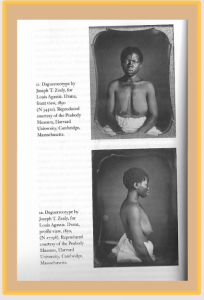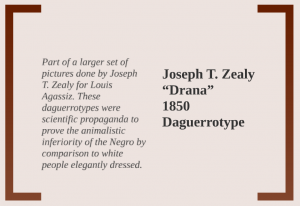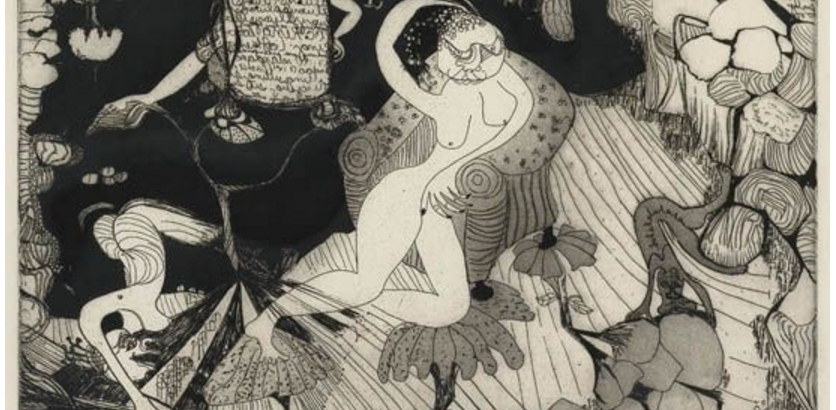The Style in “Analysis” and the Rhythm in “Idea Development”
The Artifact Breakdown
√- Rhetorical Reflective Response to Our In-Class Discussion about Paul Robeson (September 2nd)
√ Proposal Statement of Purpose First Rough draft (September 19th)
√+ Statement of Purpose Second Draft (September 28th)
√++ Curated Exhibit Title and Descriptions First Rough draft (October 12th)
√+++ Excerpts from the Final Curated exhibit compared to the analysis in the Narrative Essay (Exhibit – October 26th; Essay – November 20th)
September 2nd, 2016
The assignment due for this date was a 10min rhetorical reflective response to our in-class discussion about Paul Robeson. The conversation included a brief history of Paul Robeson’s life and the atmosphere of theater (especially for people of color) before Robeson flipped the script. In this excerpt I have highlighted the statements that depict my idea development and analysis. The idea development is evident in the progression from the broad topic of barriers being broken down to what those barriers meant while established and after being demolished. The analysis in this assignment surfaced as I took the meaning a step further and analyzed more connections between Robeson and James Earl Jones as well as making a connection outside of the topic. Even with the high points, my style and rhythm here was slightly clunky and clumsy. The next step is to improve the flow.
The first half of the 20th century was full of barriers being broken down. These barriers stretched across every facet of the human experience, including the arts. A prime example of this is “Othello” which is a Shakespearean play with the main role being a man of color, Othello. Before a man named Paul Robeson, this man of color was played by white men in black face. Paul Robeson broke down that barrier in 1930 by playing the infamous character. Present day, this may not seem that significant because such barriers are no longer in place for actors of color. But Robeson paved the way for actors like James Earl Jones to play in the role of Othello and to expand their acting horizons even further! James Earl Jones is now most famous for his deep full voice which uttered the words “Luke, I am your father” in Star Wars. But the influence Paul Robeson had on Jones circles all the way back around when Jones plays Robeson in the play about his life. As Isaac Newton stated in a letter to Robert Hooke, “If I have seen a little further it is by standing on the shoulders of giants.” To me, James Earl Jones put those words into action. Paul Robeson was his giant; Robeson was an activist and radical in his ideals and actions for the time period in which he lived. James Earl Jones is more well-known but by being a part of Paul Robeson the play, he gave credit to the man that made his success and that of others possible…”
September 19th, 2016
The Exhibit Proposal was a very large writing assignment with multiple parts and drafts. All of this work was in preparation for our Curated Exhibits. These exhibits explore a theme evident in a play written by a particular list of Black writer. The proposal was comprised of an Introduction, Statement of Purpose, Objective, Plan of Action and an annotated bibliography. The excerpt I have chosen for this stage in my improvement is the first rough draft for the Statement of Purpose. In this section, I was tasked with expanded on my general theme established in the Introduction and relate it to my selected text, “Forty Yards” by Zora Neale Hurston. Here, I have highlighted the textual examples and core ideals from my theme in this draft. This assignment is more concise while upholding the idea development, but there could have been more analysis. To fix the analysis I decided to great group labels for mini exhibits within my larger work. By creating labels, I will be able to better analyze the complexities of Music, Dance, Visual Arts, Prayer and Education on social justice movements.
In “Forty Yards,” Zora Neale Hurston illustrates the popular concept of Negro life in the 1930s. This Negro football game is a prime example of how vibrant morale and pride was within the community. Each team and corresponding cheer section would go back and forth with rhythmic and catchy cheers that highlighted their team’s attributes. But, Hurston proves this to be more than just an average football game. “Couldn’t hear nobody pray” rang out from the Lincoln players as they made the first play. Subsequently, “Joshua fit the battle of Jericho” was shouted by the Howard team during the next play. This ties in with the theme because such classic Negro Spirituals have never gone away; they were used to increase morale during slavery, during this New Negro movement and on into this 21st Century. Therefore, music has truly shaped and followed the Black community. The use of arts does not end with catchy tunes, because Hurston goes on to describe every moment of the game as a dance; “Whenever a player is tackled there is a duet of dancing.” To me, this was symbolic of the cooperation between leaders and groups with differing methodologies for achieving a common goal. Another important aspect of depicted in this skit is the religious influences on Black culture as Lincoln players close it out with a prayer.
September 28th, 2016
This is the second draft of my Statement of Purpose. Although much of the paragraph remained the same, the sentence I added to the end addressed the issue I found in the previous draft. Before the inclusion of that sentence I had not even directly mentioned the relevance of things such a music and dance on my exhibit or the public. The addition completed the early stages of my exhibit’s idea development and set the stage for the more detailed analysis the group labels include.
In “Forty Yards,” Zora Neale Hurston illustrates the popular concept of Negro life in the 1930s. This Negro football game is a prime example of how vibrant morale and pride were within the community. Each team and corresponding cheer section would go back and forth with rhythmic and catchy cheers that highlighted their team’s attributes but it was more than just an average football game. “Couldn’t hear nobody pray” rang out from the Lincoln players as they made the first play. Subsequently, “Joshua fit the battle of Jericho” was shouted by the Howard team during the next play. Classic Negro Spirituals like those have never gone away; they were used to increase morale during slavery, during this New Negro movement and on into this 21st Century. Therefore, music has truly shaped and followed the Black community. The use of arts does not end with catchy tunes, because Hurston goes on to describe every moment of the game as a dance; “Whenever a player is tackled there is a duet of dancing.” To me, this was symbolic of the cooperation between leaders and groups with differing methodologies for achieving a common goal . Another important aspect depicted in this skit is the religious influences on Black culture as Lincoln players close it out with a prayer. The focus of this exhibit will include groups of smaller exhibits on music, call and response, “dance,” and prayer; these smaller exhibits will support the general theme of culture, unity and morale as driving forces for Black social movements.
October 12th, 2016
After finalizing the proposal it was time to begin creating the actual Curated Exhibit. The first step in that process was developing a title and descriptions; this excerpt is my first rough draft from this portion of the assignment. Although this draft was quite rough, I believe the improvement is still here. First, I was able to summarize the ideas developed in the Statement of Purpose to create the title “Black Culture, Makes Change.” The group labels include Music, Dance, Visual Art, Prayer and Education which are all facets of the culture of any ethnicity. For the purpose of this exhibit each aspect was analyzed within black communities. The second part of the title is also valid and fitting because of change like integration achieved by the Civil Rights Movement. This is an example of how idea development can consolidate to create one overarching topic such as the title in this first draft. Analysis is also represented here (although not to its full potential) with the early development of descriptions for the group labels to summarize the artifacts each mini exhibit includes.
Black Culture, Makes Change
Black art and culture have been tremendously influential in regards to Black social movements. Often times the traditions of one’s culture become so deeply ingrained and natural that it is forgotten why we even feel the way we feel, do, say, and think the things we do. While providing a reminder of these origins, the exhibit on display here will impact the current Social Justice movements and inspire people of all ethnicities and backgrounds to get behind the cause.
Group Labels
Music
Music has used to uplift and inspire for centuries. During the slave’s fight for freedom, the songs of choice were Negro Spirituals. As generations passed, Jazz and Gospel were added to fuel the New Negro Movement and Civil Rights Movement. Today, as part of the Black Lives Matter Movement, Hip Hop and R&B also serve driving forces for unity and the thirst for true equality.
October 26th, 2016
Below is the order in which the viewer would this particular artifact from the Education portion of the final Curated Exhibit. I will not provide much more description here because that analysis is included in the final draft of the Narrative Essay.



November 20th, 2016
The Narrative essay was written from the perspective of a visitor to the exhibit. For my particular exhibit I chose to take on the persona of a young white female college student with a limited knowledge of black culture and history. In this way, I was able to take the visuals from the exhibit and do the best idea development and analysis of the semester. Her lack of knowledge led her to dig into each artifact and grouping more than I would have because the information was new to her. The fresh perspective is evident in the voice I used as well as the way I described each artifact. This was a particularly disturbing one which depicting scientific racism and propaganda. But regardless of the persona I used, I deliberately used her name, Drana, time and time again to restore the humanity Zealy stripped with such daguerreotypes.
These images are very disturbing. Pictures are taken of a black woman from the front and side with her dress top pulled down to her waist. Although her face seems very youthful, her breasts seem lifeless from overuse. Veins bulge from her forward as signs of constant stress or pain. The rest of her skin is quite smooth which most likely means she is a young woman that has faced great suffering and pain. Her name was Drana. I move on to the description to learn more about why photographs like this would be collected. I am saddened to learn that Drana was only one in a larger set of photographs meant to be “scientific” propaganda. The goal was to take vulgar pictures such as the ones of Drana and compare them to elegantly dressed white people to “prove the animalistic inferiority” of black people. As this exhibit proposed, I feel enlightened to the point that I am eager to find ways to support black communities. Although pictures like Drana’s are in the past, the effects are still alive and well. The people that were convinced that the scientific racism was correct have passed those ideas down to living generations. Also, I am convinced that exploitation of black people like that of Drana exists today as well. Black Art does express black culture; black culture does make change.
